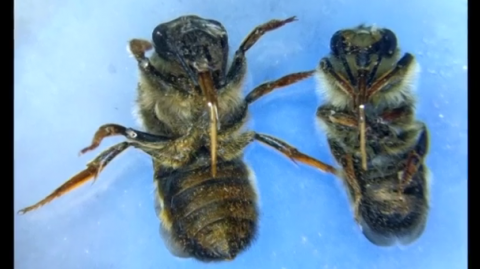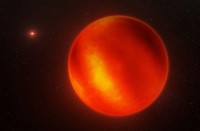
GRANADA, Spain (Reuters) — Detailed microcomputed tomography (micro-CT) scans of mason bees have been released by world-renowned microtomographer Professor Javier Alba-Tercedor, of the University of Granada.
Alba-Tercedor’s images helped him win ‘Best Picture Award’ at June’s Bruker micro-CT users contest in Brussels.
The Professor of Zoology uses a SkyScan 1172 scanner to produce the remarkably detailed images.
The SkyScan uses microtomography, a non-invasive technique used by the scientific community, especially in the field of medicine, to generate high-resolution images for medical use.
Inside the scanner a small camera takes hundreds of X-ray photographs, mapped together within seconds to produce a 3D image. The Professor places dead insects, some of which are measured in just millimeters, on lightweight supports, which are digitally removed from the 360 degree images.
“Micro-CT scanning is valuable not only for scientific research, but it is also a form of art that can be used for educational purposes,” Alba-Tercedor told Reuters.
The European mason bee is a solitary creature that produces neither honey nor beeswax.
It’s named for its habit of using mud or other masonry products in constructing their nests, made in naturally occurring gaps such as between cracks in stones or other small dark cavities.








